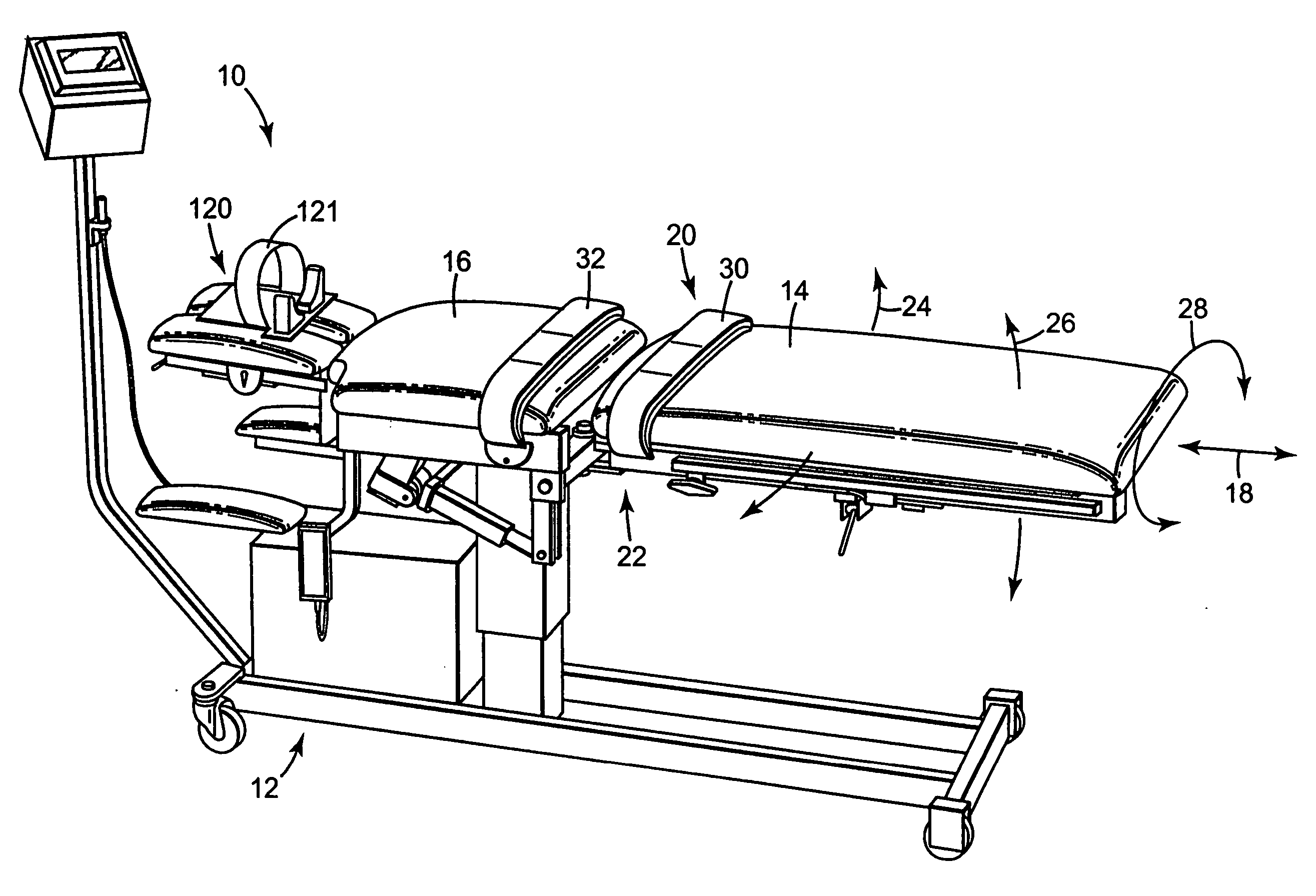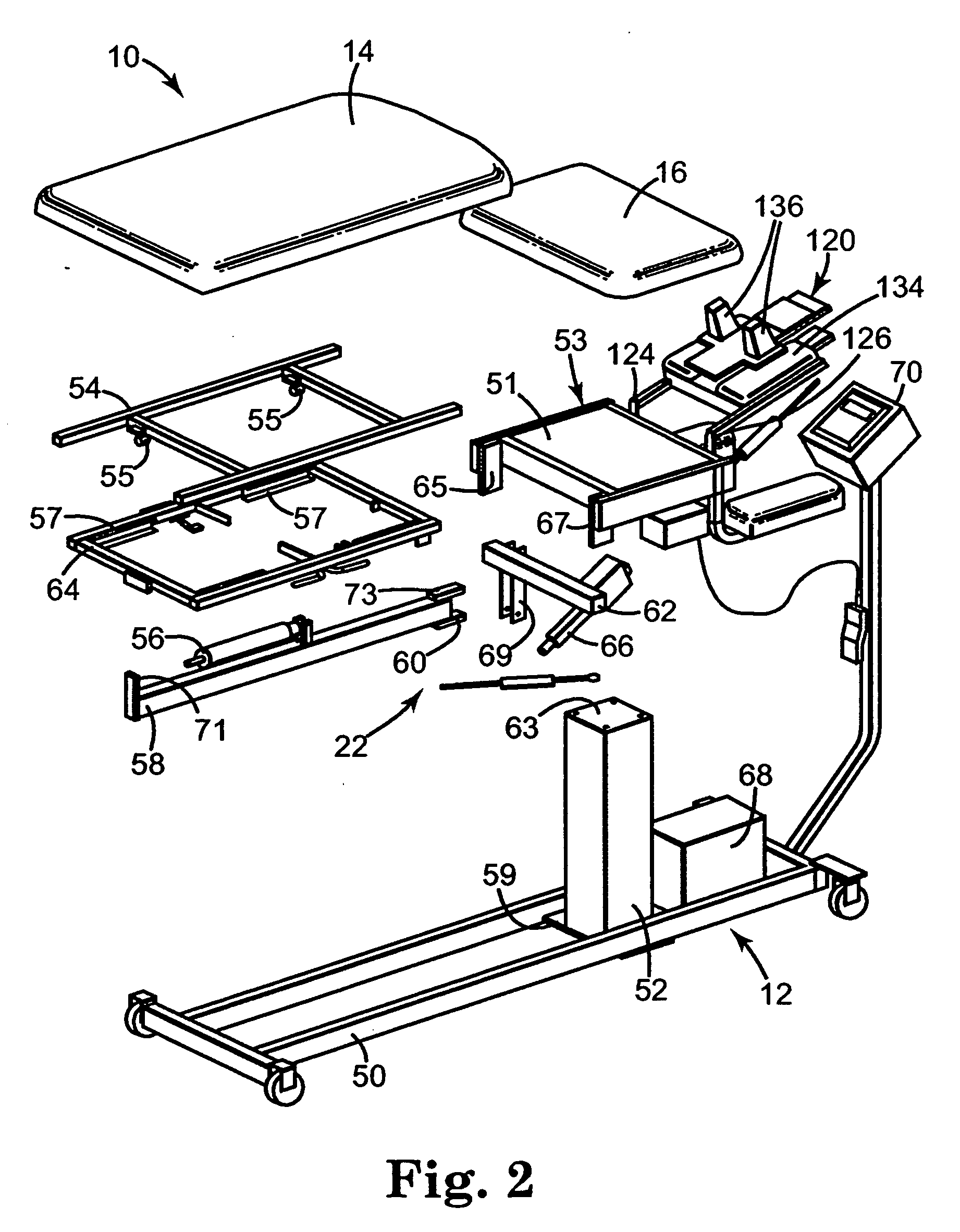Multi-axis cervical and lumbar traction table
a lumbar and cervical traction technology, applied in the field of therapeutic traction devices, can solve the problems of insufficient treatment of patients with painful postural deformities, system failure to meet patients' needs, and limited success of the system
- Summary
- Abstract
- Description
- Claims
- Application Information
AI Technical Summary
Benefits of technology
Problems solved by technology
Method used
Image
Examples
Embodiment Construction
[0027] The present invention provides a therapeutic apparatus for treating a patient suffering from back pain. The apparatus is adapted to exert a therapeutic traction force on a patient's spine to relieve pressures on structures that may be causing pain. The apparatus is further capable of producing the forces and positions required to cause decompression of the intervertebral discs, that is, unloading due to distraction and positioning. The apparatus provided by the present invention can be used to treat many conditions, including, but not limited to back pain, neck pain, herniated disc, protruding disc, degenerative disc disease, posterior facet syndrome and sciatica.
[0028]FIG. 1 illustrates a therapeutic apparatus 10 including a support frame 12 having a first body supporting portion 14 and a second body supporting portion 16. First body supporting portion 14 is capable of movement relative to second body supporting portion 16 along a longitudinal axis 18. As used herein, the t...
PUM
 Login to View More
Login to View More Abstract
Description
Claims
Application Information
 Login to View More
Login to View More - R&D
- Intellectual Property
- Life Sciences
- Materials
- Tech Scout
- Unparalleled Data Quality
- Higher Quality Content
- 60% Fewer Hallucinations
Browse by: Latest US Patents, China's latest patents, Technical Efficacy Thesaurus, Application Domain, Technology Topic, Popular Technical Reports.
© 2025 PatSnap. All rights reserved.Legal|Privacy policy|Modern Slavery Act Transparency Statement|Sitemap|About US| Contact US: help@patsnap.com



